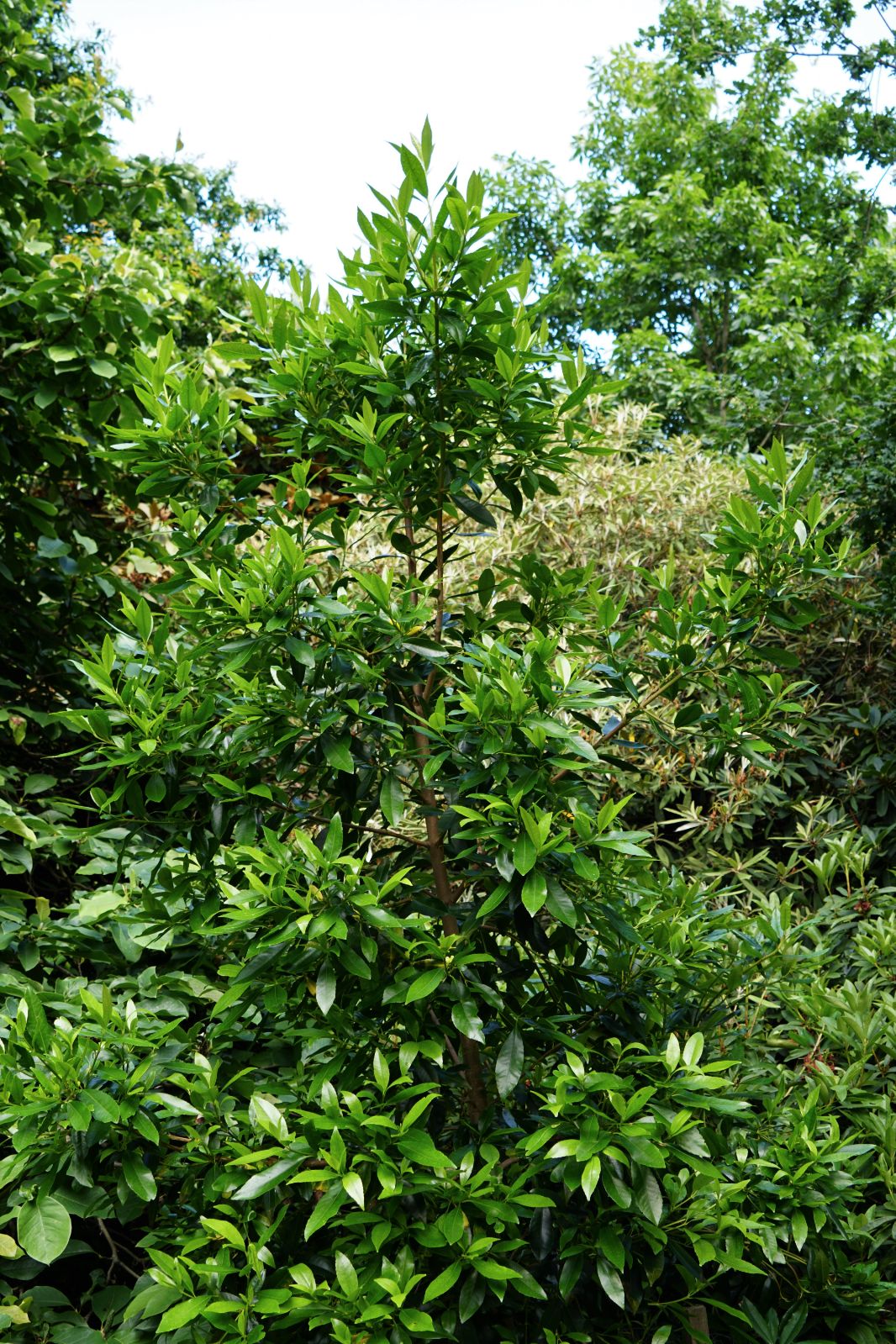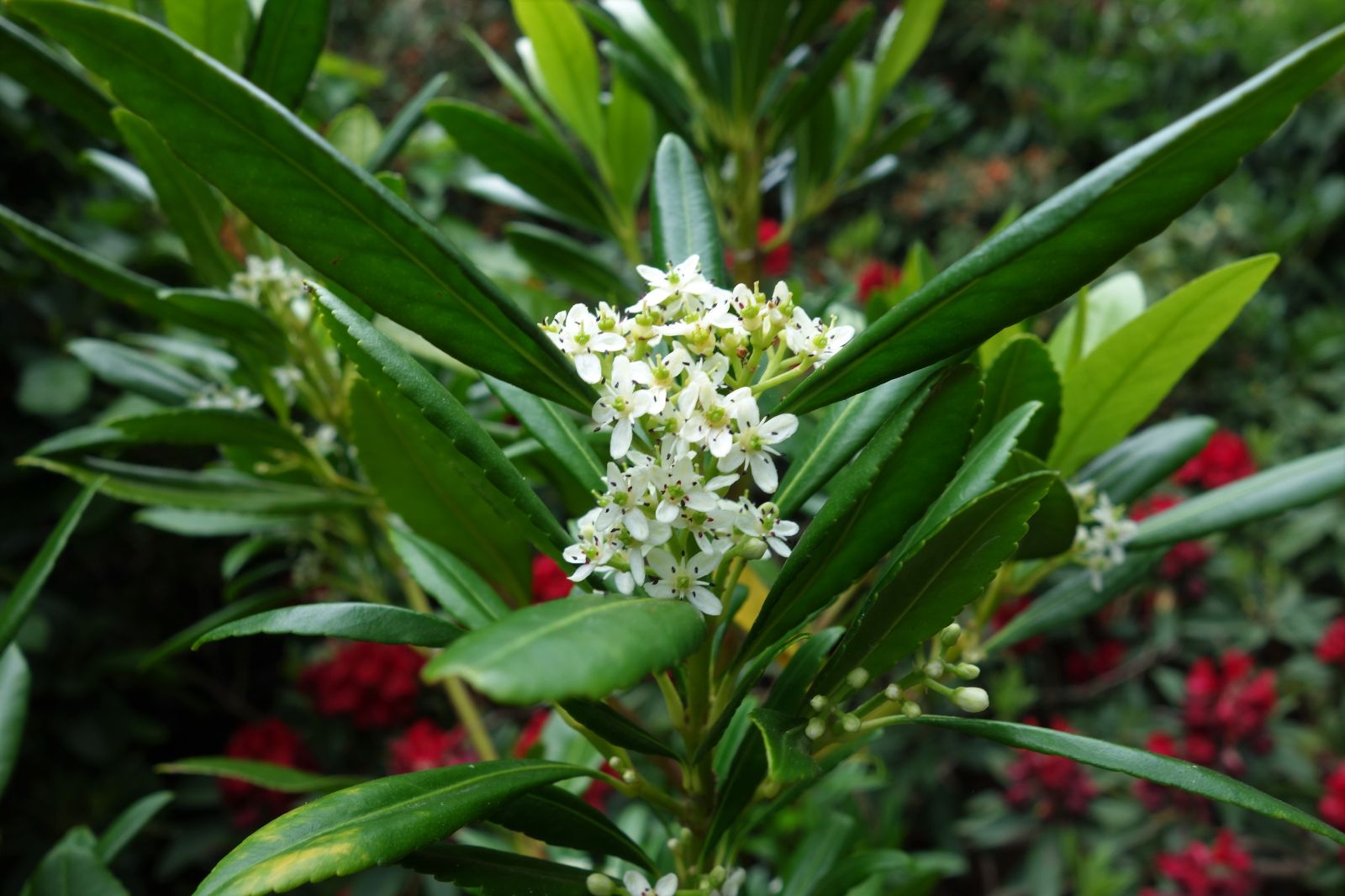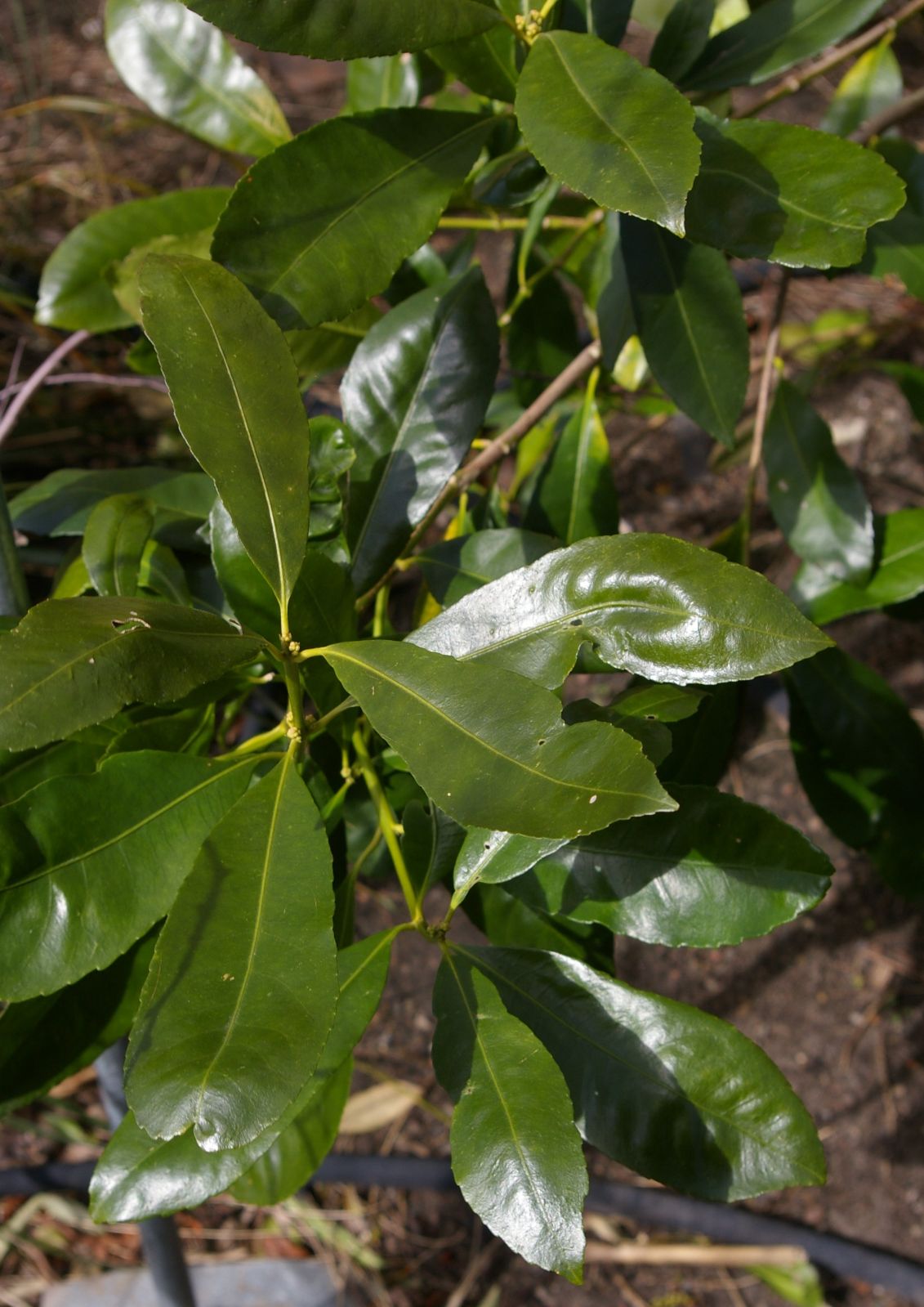Pitavia punctata
Credits
Article from New Trees by John Grimshaw & Ross Bayton
Recommended citation
'Pitavia punctata' from the website Trees and Shrubs Online (treesandshrubsonline.
Genus
Common Names
- Canelillo
- Pitao
Other taxa in genus
Tree to 15 m, 0.5 m dbh. Bark grey, tuberculate. Branchlets greyish to glaucous, glabrous and with longitudinal stripes; foliage dense. Leaves evergreen, opposite or in whorls of three, leathery, aromatic, 1–3.5 × 1.4–4.2 cm, oblong to oblanceolate, glabrous, covered with glands, upper surface bright green, lower surface yellowish, six to nine secondary veins on each side of the midrib, margins serrate and undulate, apex obtuse or emarginate; petiole 0.3–0.6 cm long, glabrous. Inflorescences axillary, racemose, 3.5–7 cm long. Flowers hermaphrodite or unisexual by abortion, white, 4-merous; sepals triangular, concave; petals alternating with the sepals, oblong to ovate, 0.4–0.6 cm long; stamens eight, in two rows. Fruit a drupe, 1.8–2.5 cm diameter, yellowish green with red spots. Flowering September to November, fruiting April (Chile). Rodríguez R. et al. 1983. Distribution CHILE: Bío-Bío, Maule. Habitat Humid forest, often near water; associated with Peumus boldus, Lithraea caustica, Cryptocarya alba and Myrceugenia planipes. USDA Hardiness Zone 8. Conservation status Endangered (IUCN), due to habitat loss and degradation, and wood extraction. Critically endangered (Gardner et al. 2006). Illustration Rodríguez R. et al. 1983, Gardner et al. 2006; NT630.
This central-Chilean endemic has a rather narrow niche in the wild, favouring damp sites at rather low altitudes, and has been subjected to forest clearance, fires and collection of wood for fuel, resulting in its current critical conservation status. Fortunately it is easy to grow, from freshly collected seed and from cuttings, and damaged trees are also often able to regenerate from suckers (Gardner et al. 2006), so with active conservation management its decline may be halted. Pitavia punctata is an attractive evergreen tree, with neat small leaves that flush a bright green and become a duller darker shade as they mature. The small white flowers are produced in early summer, and are succeeded by yellowish green fruits. It was first introduced to the Royal Botanic Garden Edinburgh in 1996, under the collection numbers ICE 658 and 659, and specimens from each of these are growing outdoors there. That from ICE 658, situated near the Glasshouses, was a flourishing bushy tree of 4 m when seen in June 2005, and was just finishing flowering at that time. No other established specimens have been located in the research for this book, but the species is currently being offered (2007) by the Dutch company Patagonia Plants BV. A mild moist site would seem to be appropriate.




